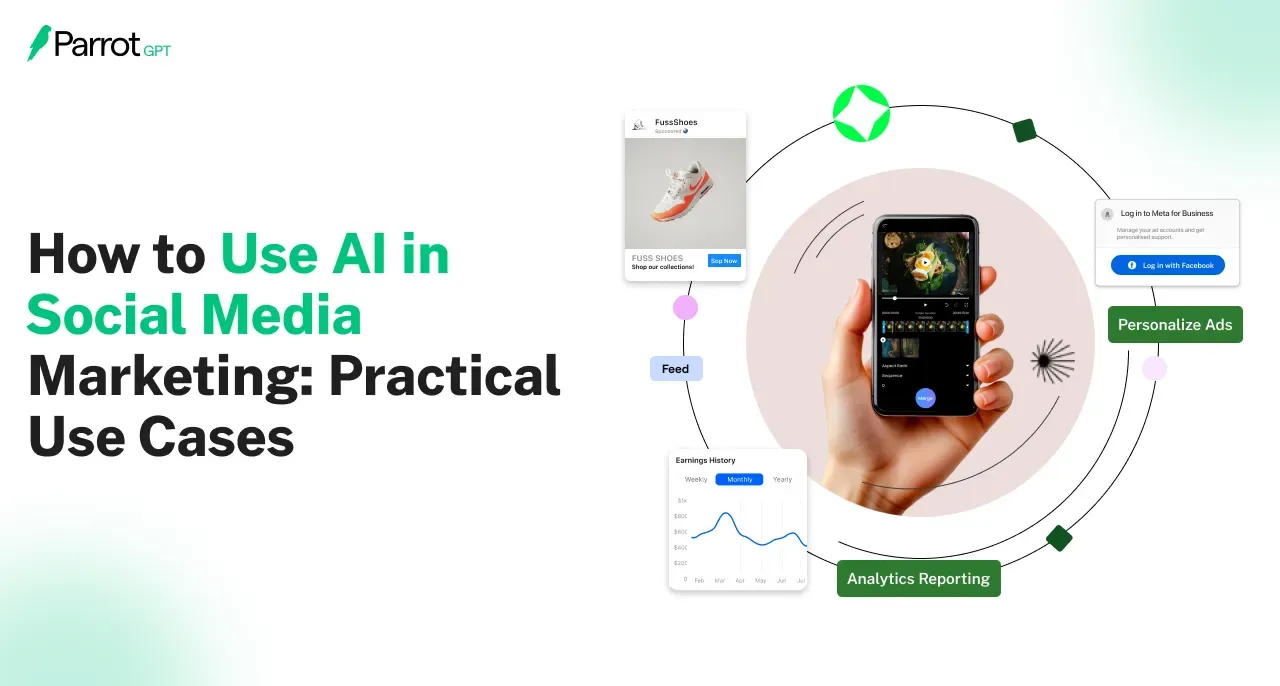Introduction
Marketers are saving up to 10 hours a week with AI tools.
That’s not a productivity hack—it’s the new normal.
For social media marketers juggling content calendars, reels, captions, ad creatives, and analytics, time is always running short. But the game is changing.
AI has invaded social media, reshaping the way marketers operate. It’s no longer just about posting content—it’s about optimizing everything from creation to engagement.
And using AI in social media is like having an extra team member who never sleeps. Whether it's crafting the perfect caption, analyzing data, or automating scheduling, AI handles the grunt work, allowing you to focus on strategy and creativity.
In this guide, we’ll explore how to use AI in social media marketing through 10 hands-on, time-saving use cases you can put to work right away.
These examples will show how AI can streamline your workflow, save time, and help you stay ahead of the curve in an ever-evolving landscape.
Ready to make AI your new social media assistant? Let's dive in.
Benefits of Leveraging AI in Social Media Marketing
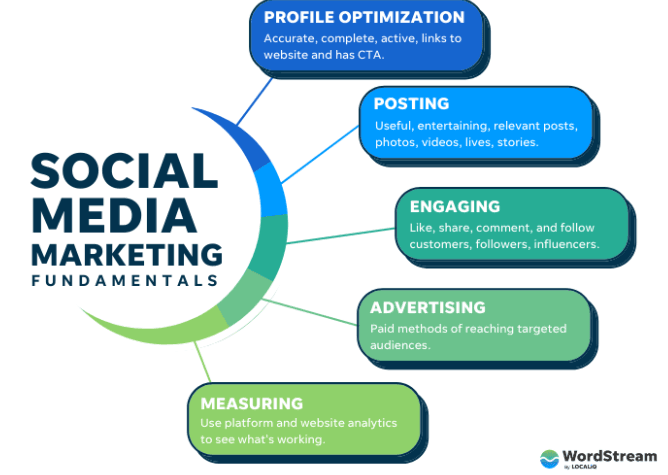
Social media marketing demands speed, creativity, and constant updates. That’s tough to manage manually.
But with the use of AI in social media, marketers are now cutting down on time-consuming tasks and getting better results.
From boosting productivity to making data-backed decisions, AI is changing how marketers work every day. Here's a closer look at the key advantages.
Saving Time and Streamlining Repetitive Tasks
One of the biggest benefits of using AI in social media is that it automates repetitive work. Tasks like scheduling posts or creating performance reports often take up hours each week.
With AI-powered platforms, your content can be auto-scheduled across platforms at peak times without you lifting a finger. At the same time, AI can compile detailed analytics reports, freeing you from manually tracking metrics.
Instead of spending hours on routine tasks, marketers can shift their focus to content strategy and engagement, knowing the backend work is handled.
Producing Quality Content at Scale
AI makes it easier to produce content quickly without losing quality. It can suggest captions, design templates, or edit videos, making your workflow smoother.
For marketers constantly posting visuals, AI tools that generate branded graphics or auto-edit reels can cut production time in half.
Even for written content, AI tools offer caption suggestions or trending hashtags based on what’s working, so you're not starting from scratch each time. This plug-and-play approach gives marketers more breathing room for creative thinking.
Making Smarter, Data-Backed Decisions
Social platforms generate loads of data, but pulling insights from them can be overwhelming. AI takes care of this by tracking engagement, highlighting patterns, and pointing to the type of content that resonates most.
Say a certain reel format performs well—AI picks up on that trend and suggests more of it. Over time, this feedback loop helps marketers focus on what moves the needle instead of guessing. It's a smarter way to fine-tune strategy using real-time performance.
Delivering Personalized Experiences at Scale
Generic posts rarely hit the mark anymore. Audiences expect content tailored to their preferences. That’s where the use of AI in social media marketing makes a difference—it analyzes user behavior and serves content that aligns with individual interests.
For example, if someone constantly engages with tech posts, AI tools can recommend similar themes for future targeting or create personalized ad sets.
This level of precision makes users more likely to click, share, or convert because the content actually speaks to them.
Maintaining Brand Consistency Across Platforms
When you're managing content across five or more platforms, keeping your tone and timing on point can get tricky. AI helps by standardizing brand voice across channels.
You can define the tone—whether it’s playful or formal—and AI adjusts future posts to match it.
If your brand posts weekly tips on Instagram but shares longer updates on LinkedIn, AI tools ensure both follow the same core voice, just adapted for the platform.
This keeps your brand recognizable and reliable, no matter where your audience finds you.
These benefits make one thing clear—the use of AI in social media isn’t just about saving time.
It’s about working smarter, creating better content, and building stronger connections with your audience. Now that we’ve covered what AI brings to the table, let’s get into the core of this guide.
10 Practical Uses of AI in Social Media
The benefits of using AI are clear - from increasing efficiency and saving time to enabling smarter decision-making. Now, let's take a closer look at how these benefits translate into action.
1. Go from Blank Page to Full Calendar in Minutes
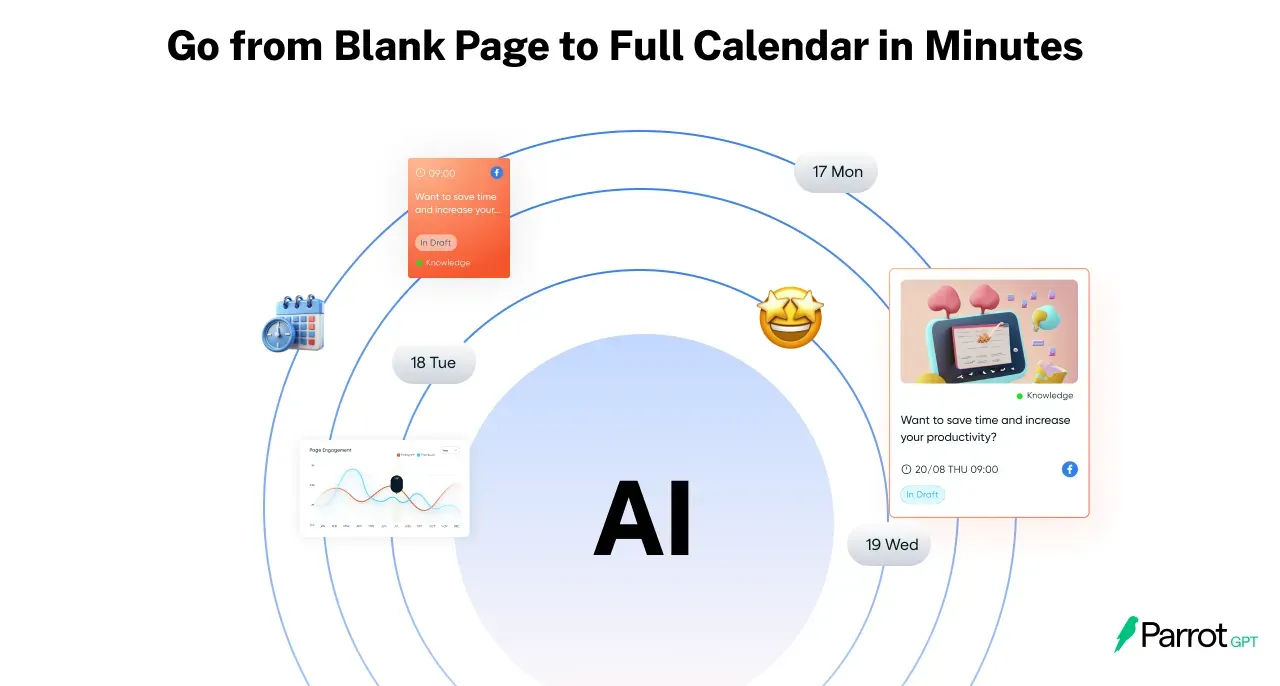
Planning content and scheduling posts across multiple social media platforms can feel like a daunting task. AI tools can take this off your plate by quickly generating a comprehensive content calendar for you.
Imagine you're preparing for a product launch. Instead of manually brainstorming post ideas for each platform, you simply input your product details, target audience, and key messages into an AI tool.
The tool then provides a full content plan, complete with suggested captions, ideal posting times, and even image recommendations. You now have a ready-to-go calendar, and the AI even offers post variations for each platform, ensuring the content is optimized.
AI Tools to Try:
- ContentStudio: Automatically generates content ideas and schedules posts for social media.
- HubSpot: Uses AI to streamline content planning and scheduling, ensuring posts reach your audience at the right times.
2. Create Ad Creatives with AI
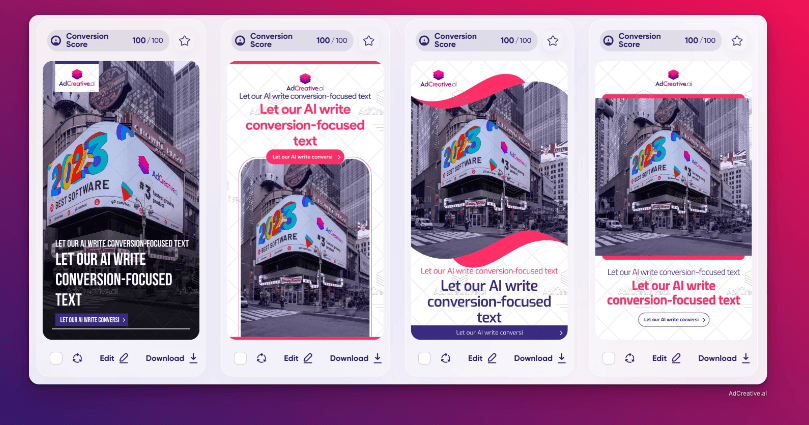
Designing social media ads requires creativity and optimization. AI helps by taking data from previous campaigns and using that information to generate ad creatives that are more likely to resonate with your target audience.
Consider running a sale promotion. By inputting your product details and customer data, the AI generates a variety of ad creatives, suggesting the best-performing images, copy, and designs for the target demographic.
You’re not just getting random templates – you’re getting tailored designs that have been proven to convert, saving time while increasing the chances of a successful campaign.
AI Tools to Try:
- Canva: Offers AI-powered templates for creating on-brand visuals with minimal effort.
- AdCreative.ai: Uses AI to generate high-converting ad creatives optimized for different social media platforms.
3. Write Captions, Headlines, and Ad Copies with AI
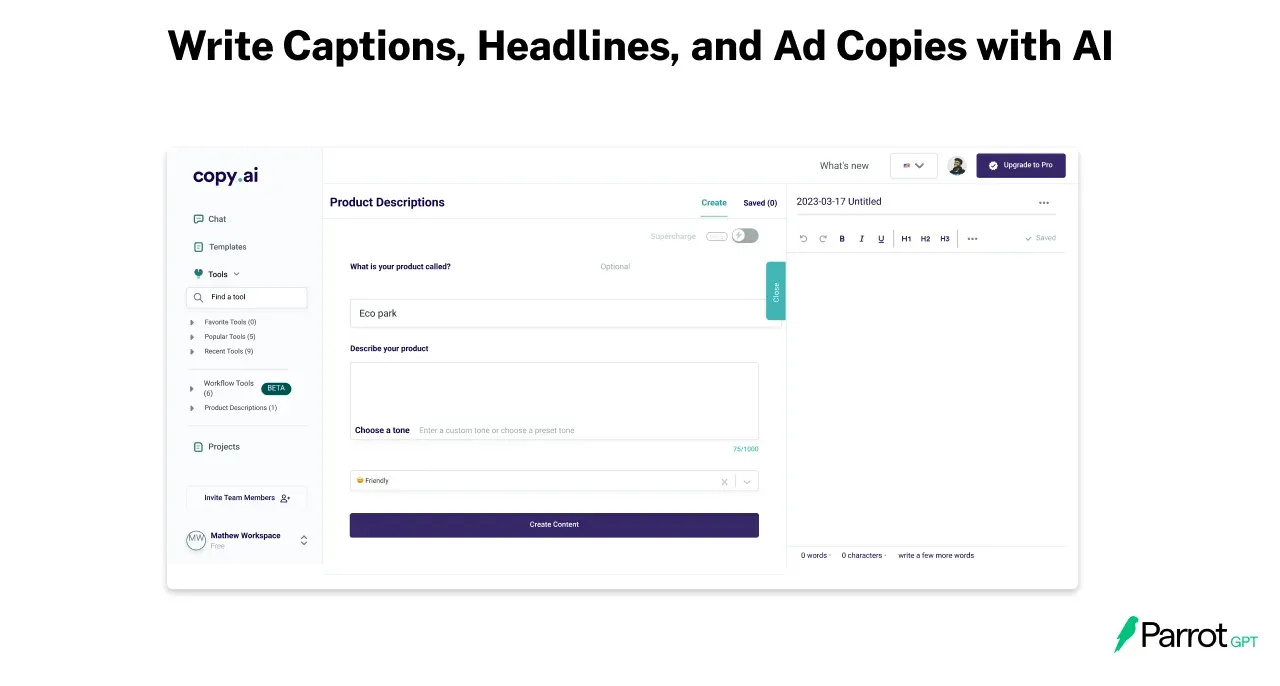
Crafting engaging social media captions, headlines, and ad copy can be a struggle, especially when you need to write a large volume of posts.
AI can take care of this, providing suggestions that align with your brand’s tone and resonate with your audience.
Imagine you’re running a Facebook ad campaign. Instead of writing dozens of captions, you simply input your product details, and AI generates multiple options for you to choose from.
You can refine the copy by adjusting the tone or keywords, ensuring it’s tailored to your target audience’s preferences. Whether it’s a caption for a post or a headline for an ad, AI helps you write quickly and consistently, freeing you up to focus on strategy.
AI Tools to Try:
- Copy.ai: A versatile tool that generates copy for social media posts, emails, and ad campaigns.
- Jasper: AI that writes copy in your brand’s voice, including captions and ad text for various platforms.
Suggested Reading:
List of Top 10 AI Influencers on Instagram
4. Automate Analytics Reporting
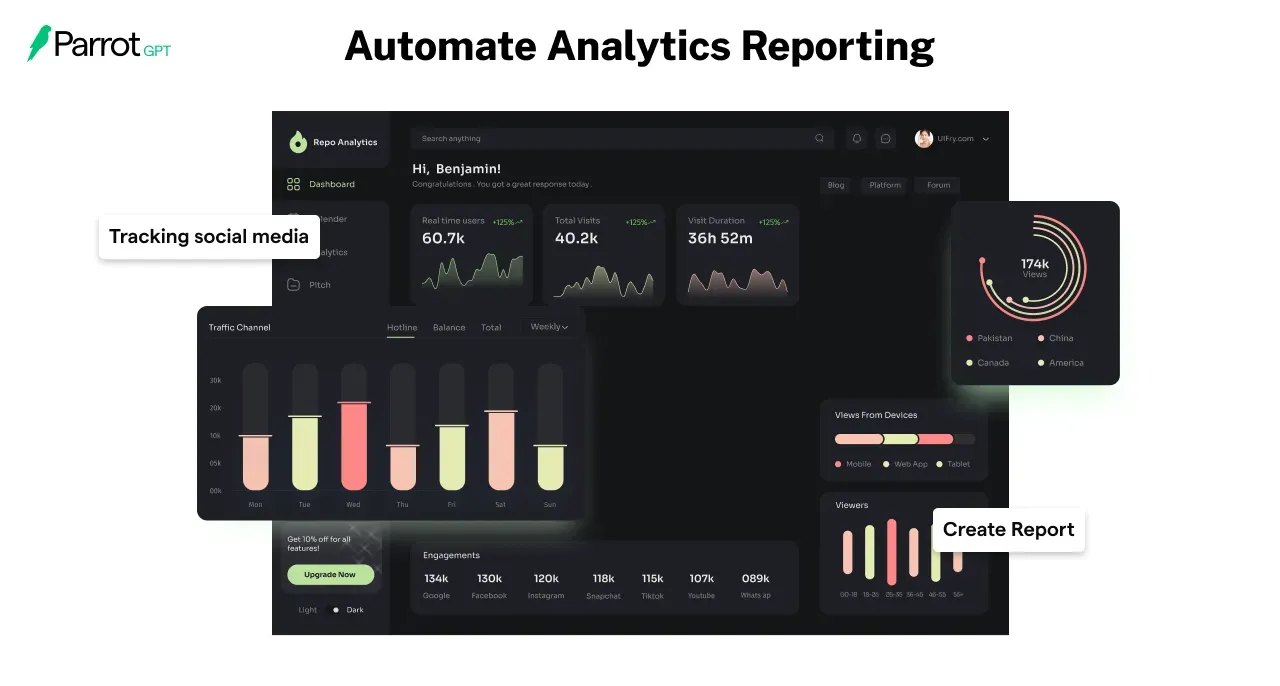
Tracking social media performance requires monitoring multiple platforms and sifting through numerous metrics. With AI, all this data can be gathered and processed for you, delivering actionable insights with little effort on your part.
Let’s say you ran a campaign across several platforms, and now you need a performance report. Instead of manually compiling data from each platform, AI pulls in engagement metrics, click-through rates, and demographic information into one comprehensive report.
This way, you don’t waste time gathering data, and you get a clearer picture of how your content is performing.
AI Tools to Try:
- Hootsuite: Provides AI-driven analytics and reporting for various social media channels.
- Sprout Social: Generates reports and insights based on AI-powered social media monitoring.
5. Use AI to Engage with Followers
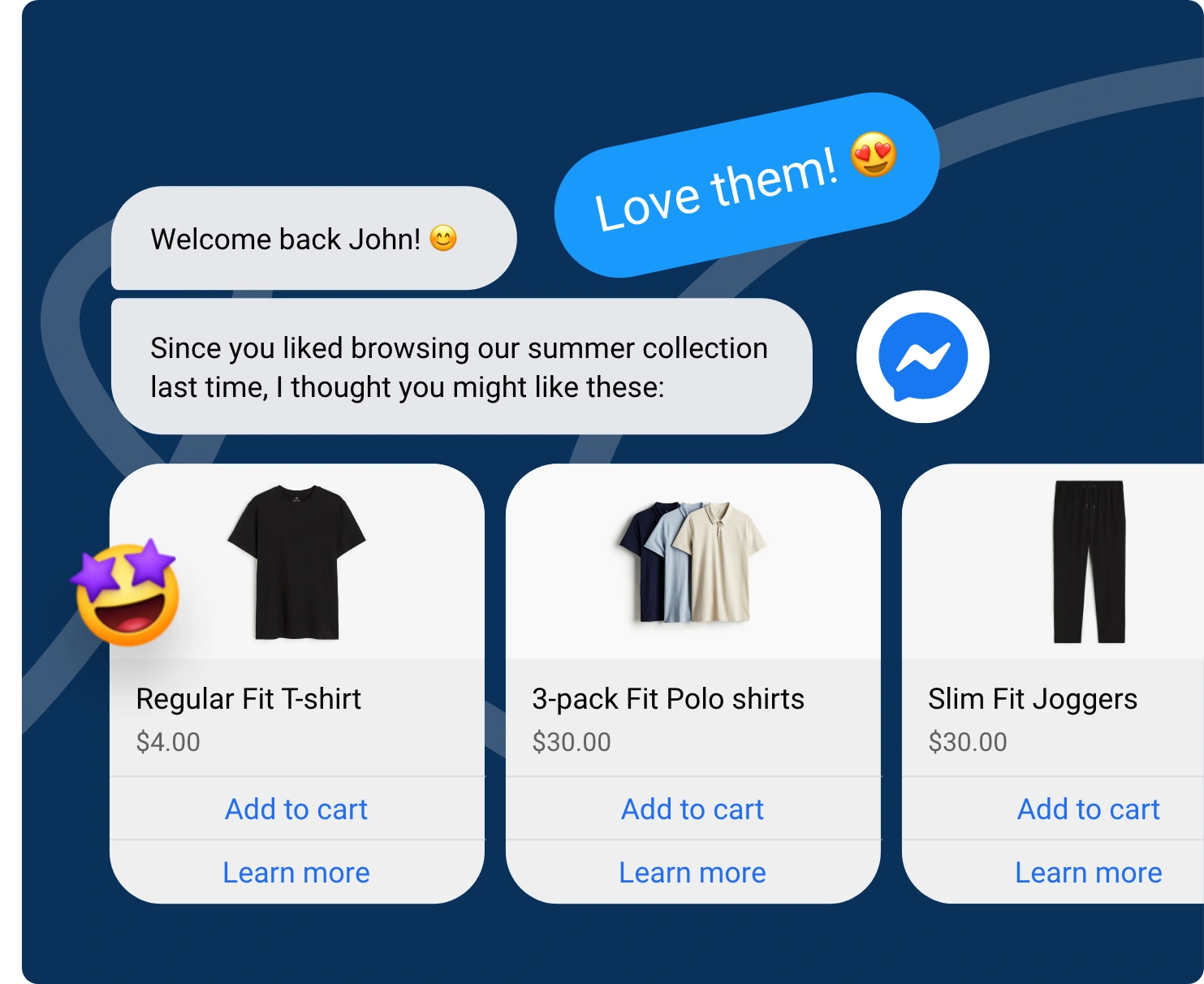
Engaging with followers is a constant task, and with AI chatbots, you can handle the bulk of inquiries and maintain interaction at any time of day.
AI-powered tools can automatically respond to frequently asked questions, direct followers to specific resources, and even guide them through purchasing decisions.
For example, if a follower messages your Instagram page with a question about shipping, an AI chatbot can instantly provide an answer.
The AI chatbot can even escalate more complex inquiries to human agents. This keeps engagement high and ensures no message is left unattended.
AI Tools to Try:
- BotPenguin: An AI-powered chatbot that automates conversations on Instagram, Facebook, and websites.
- MobileMonkey: Automates follower engagement, handling FAQs, and customer service inquiries on social media platforms.
6. Monitor and Identify Trends with AI
Identifying social media trends in real time is vital for staying relevant. AI tools can help by tracking hashtags, keywords, and overall sentiment across platforms to alert you when a trend is gaining momentum.
For instance, if a particular hashtag related to your brand begins to trend, AI tools can detect this early, allowing you to capitalize on the trend by creating timely, relevant content.
This means you're not reacting to trends too late – AI helps you stay ahead of the curve by giving you a jumpstart on content creation.
AI Tools to Try:
- BuzzSumo: Tracks trends across social platforms and shows you what content is performing well in real time.
- TrendSpottr: Monitors social chatter to identify emerging trends and viral content.
7. Personalize Ads for Social Media Audiences
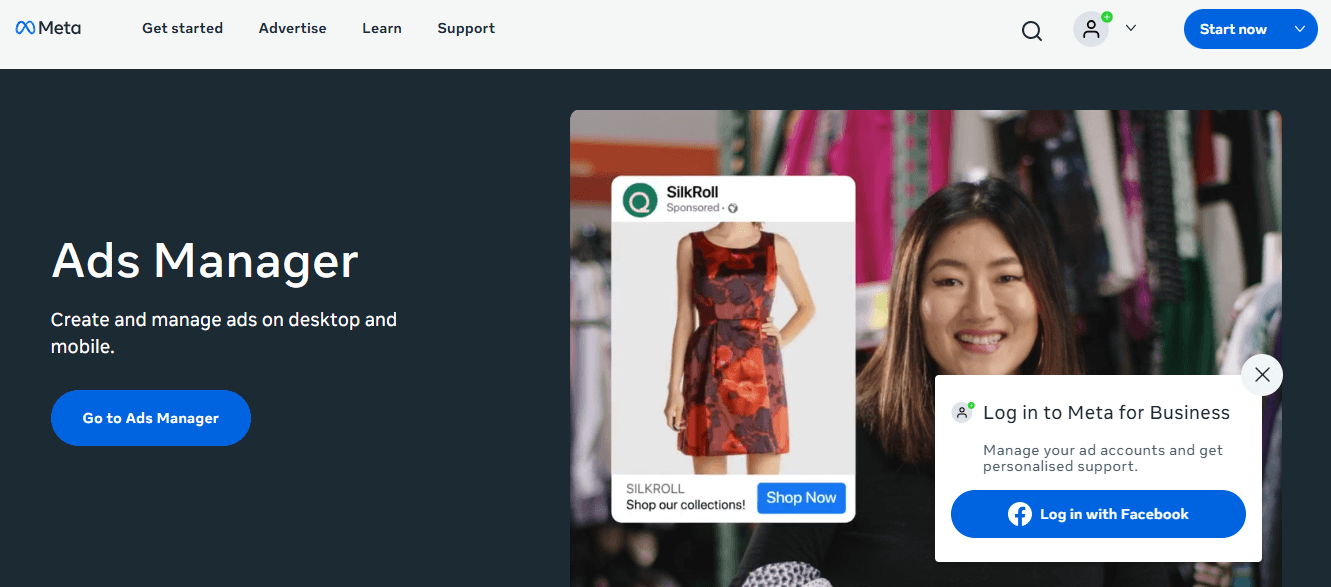
In the age of personalization, one-size-fits-all ads don’t work. AI lets you create dynamic ad variations that adjust in real-time based on user behavior and preferences.
For example, if someone clicks on your product page but doesn’t make a purchase, AI can serve them a tailored ad for the same product with a discount code, nudging them toward conversion. This allows for better-targeted campaigns, ensuring your ads reach the right people with the right message.
AI Tools to Try:
- Facebook Ads Manager: Leverages AI to personalize ad targeting, improving ad relevance for each user.
- AdRoll: Uses AI to create personalized ad experiences across social media platforms based on user data.
8. Simplifying Influencer Outreach with AI Technology
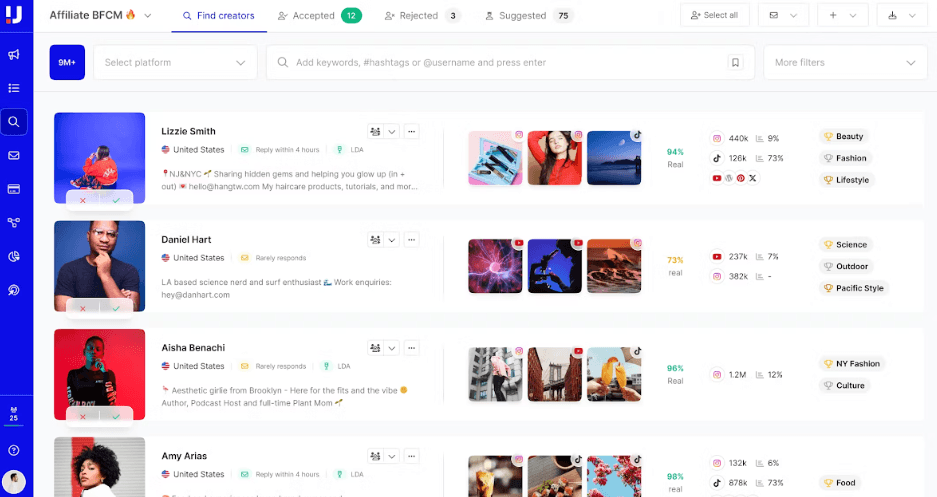
Finding the right influencer can take hours of research and still lead to a poor fit. AI tools cut through the noise by quickly matching you with influencers who align with your brand, audience, and campaign goals.
Imagine you’re launching a wellness drink. Instead of manually scrolling through profiles, you enter your product type, target demographic, and campaign style into an AI platform.
Within minutes, you get a list of influencers already posting wellness content, with high engagement, trusted by their followers, and aligned with your niche. You can even see predicted performance and cost estimates.
The AI doesn’t stop there. It can also track content performance post-collab—monitoring metrics like reach, engagement rate, and follower sentiment—so you know exactly who’s worth working with again.
AI Tools to Try:
- Upfluence: Helps you discover, contact, and manage influencers, with real-time analytics and ROI tracking.
- Modash: Filters creators by niche, audience authenticity, and location, then tracks campaign impact automatically.
9. Create Engaging Short-Form Content with AI (Reels, Stories)
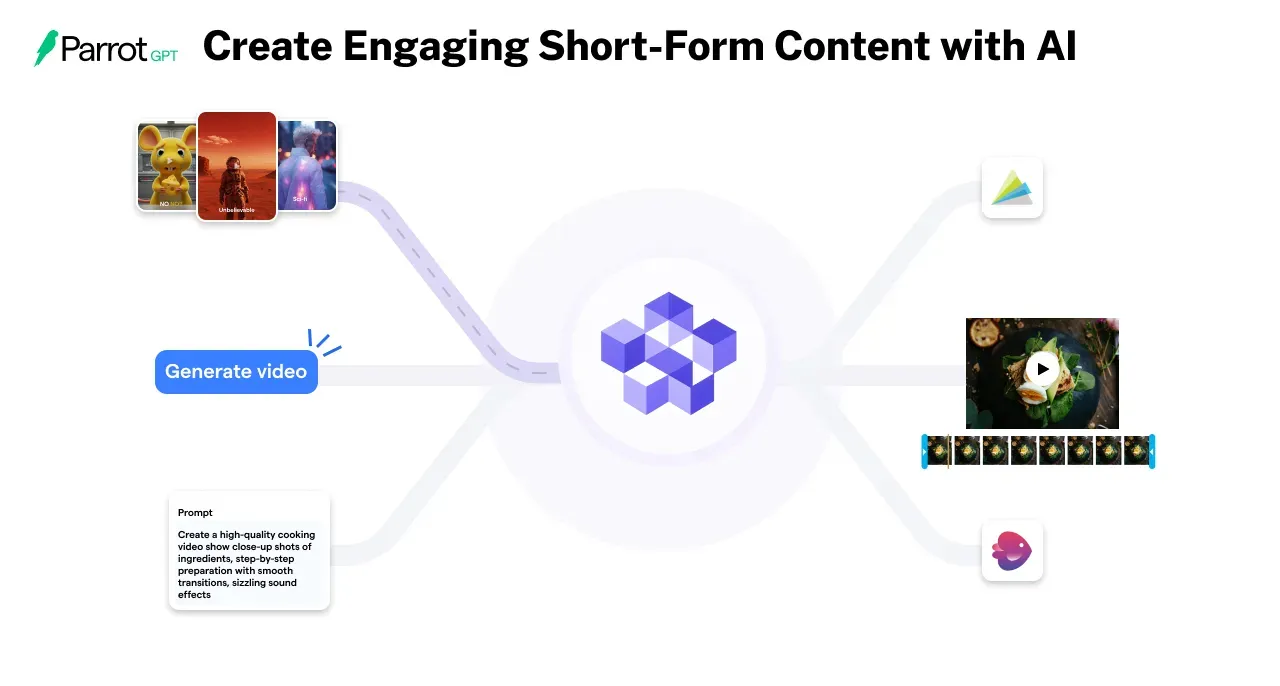
Short-form content like Instagram Reels and Stories is crucial for social engagement. But creating attention-grabbing, high-quality content takes effort. AI helps you produce optimized videos that stop users from scrolling.
For example, you want to create an Instagram Reel to promote a new product. By using an AI tool, you can input the product details, and the AI will suggest trendy sounds, effects, and video formats that are performing well at the moment.
This makes it easier to produce content that aligns with what’s popular, ensuring your video has a higher chance of going viral.
AI Tools to Try:
- InVideo: Creates engaging video content with AI-driven templates optimized for short-form content.
- Animoto: AI-powered video creation platform designed to make video production fast and easy for social media.
10. Conduct A/B Testing for Social Posts Using AI
A/B testing is a great way to figure out which social media posts perform best, but it often requires significant manual effort. AI automates this process, running tests across different versions of posts and analyzing the results to determine which performs best.
For instance, if you’re posting on Instagram and want to test which image generates more engagement, you can create two versions of the post with different images, and AI will automatically rotate them, track the results, and suggest the best-performing version.
This takes the guesswork out of optimization and gives you actionable insights in real time.
AI Tools to Try:
- Hootsuite: Provides A/B testing features for social media posts to determine the most effective content variations.
- SocialBee: Optimizes content posts automatically, ensuring your content is performing at its best.
These use cases show just how AI can transform your social media efforts. They're not just ideas for the future — these tools are already reshaping how AI is used in social media today.
Next, we'll dive into how to use them effectively. Because the key to success isn't just using AI — it’s about using it wisely.
Let’s explore the best practices that ensure you get the most out of AI while staying true to your brand and audience.
Suggested Reading:
Firebase Studio from Google: Everything you Need to Know
Best Practices for Using AI in Social Media
Integrating AI into social media marketing can boost your strategy, but using it the right way is crucial. It’s not about replacing creativity, but enhancing it.
These best practices will ensure AI serves as a tool to streamline your process while maintaining your brand’s voice.
Choose the Right AI Tool
To get the best results from AI, choose the right tool for the job. Different tasks require different tools—whether it’s content creation, engagement, analytics, or ad creative.
For example, if you need help creating compelling posts, AI writing tools like Jasper or Copy.ai are great for generating high-quality content in seconds.
If you need to create short-form videos, tools like Lumen5 or Pictory are ideal for transforming long-form content into social media clips.
By aligning the right tool with your specific needs, you ensure each task gets the attention it deserves. Start by identifying key areas to automate, then test out the tools designed for those areas. Most AI tools offer free trials, so you can experiment before committing.
Stay in Control
AI can handle repetitive tasks, but maintaining control over your brand’s voice is essential. AI tools like Copy.ai or Jasper can draft captions or suggest design concepts.
However, they can’t replace the creativity and personality that make your brand unique.
Imagine AI generates a caption for a post. While technically correct, it might lack the humor or warmth that resonates with your followers. This is where you come in.
Use AI to assist you, but ensure your authentic voice shines through. After AI generates content, review and tweak it to match your brand’s tone. Regularly audit the content to ensure it’s consistent with your desired messaging.
Always Review Before Publishing
AI is powerful, but not flawless. It can miss subtle nuances, cultural contexts, or even factual accuracy. For instance, if AI generates a holiday promotion, it might overlook recent trends or cultural nuances that are important.
Always review AI-generated content before publishing. Check for tone, accuracy, and alignment with your brand’s values.
Develop a checklist for reviewing content, focusing on readability, tone, and factual accuracy. Tools like Grammarly or Hemingway Editor can help with grammar and readability, but human oversight is essential for the final check.
Use AI Data Ethically
Using AI to gather data is powerful, but ethical considerations are key. AI tools often analyze user behavior to create personalized content. But don’t be intrusive.
For example, when sending personalized offers based on browsing history, ensure you’re transparent about how data is used. People trust brands that are open about AI and data usage.
Respect privacy and follow regulations like GDPR. Always inform users when AI is involved, particularly if chatbots handle customer inquiries. Transparency builds stronger relationships and trust with your audience.
Don’t Rely on Just One Tool
AI is most effective when used in combination. No single tool can do everything perfectly, so integrate multiple tools that complement each other.
For instance, Canva can help with creating stunning visuals, Hootsuite can handle scheduling posts, and BuzzSumo can analyze trends and content performance.
Using a combination of tools ensures a flexible, end-to-end AI workflow. This approach saves time and guarantees your social media efforts are well-rounded.
Choose tools that address specific needs, allowing you to manage all aspects of your strategy smoothly.
Conclusion
By now, you've seen how the uses of AI in social media are far more dynamic than just scheduling posts or generating hashtags.
From personalizing ad content to spotting emerging trends and streamlining influencer outreach, these 10 practical use cases show how AI can step in—not to replace your strategy, but to elevate it.
What makes the difference isn’t the tool itself, but how you use it. Pick the right mix of platforms, keep your brand voice consistent, and stay curious. After all, the use of AI in social media marketing works best when it supports your creativity, not when it overrides it.
Start by testing one use case this week. Whether it’s AI caption writing or reel editing, watch how it changes your pace. Once you see results, you’ll know exactly where to lean in next.
Frequently Asked Questions (FAQs)
Can small businesses benefit from using AI in social media marketing?
Yes, AI helps small businesses save time and money by automating content creation, scheduling, and engagement. It allows lean teams to maintain consistency and scale their presence without needing large resources or teams.
What is the first step to using AI in social media marketing?
Start by identifying your biggest challenge—content creation, engagement, or analytics. Then, explore AI tools that solve that specific problem. Begin with free trials to understand how they fit into your existing workflow.
How do I maintain authenticity while using AI in social media?
Use AI for support, not as a replacement. Always review content before publishing, infuse your brand voice, and edit AI-generated text to reflect your unique style. Authenticity comes from oversight, not automation alone.
Can I use AI to manage multiple social media platforms at once?
Yes, tools like Buffer, Metricool, and Later use AI to schedule posts, manage content calendars, and report performance across platforms—all from a single dashboard.
Are there risks in using AI for social media marketing?
Risks include over-automation, generic content, and potential loss of brand voice. To avoid this, always edit AI outputs, maintain human oversight, and use tools that align with your strategy.


